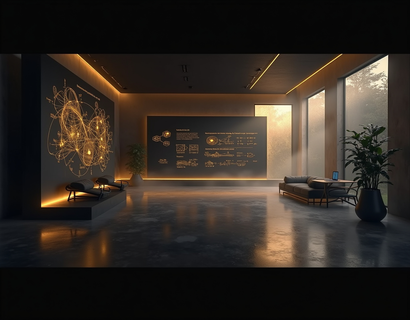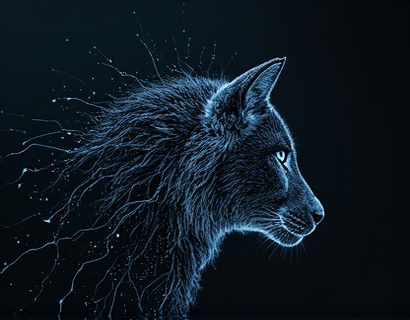Unlocking the Secrets of the Burgundy Industry: An AI-Driven Educational Resource
The Burgundy region, renowned for its rich history, culture, and particularly its prestigious wine industry, offers a wealth of educational opportunities. This AI-driven knowledge hub is designed to provide specialized insights into the Burgundy industry, tailored specifically for educational institutions and families. The platform aims to deliver accurate, verified content that is both educational and engaging, ensuring a safe and enriching experience for students and children.
Understanding the Burgundy Wine Industry
The Burgundy wine region, located in eastern France, is one of the most celebrated wine-producing areas in the world. Known for its unique terroir, which includes specific soil types, climate conditions, and traditional viticultural practices, Burgundy produces some of the finest Pinot Noir and Chardonnay wines. This section delves into the fundamental aspects of the Burgundy wine industry, from the history of viticulture in the region to the current practices and challenges faced by winemakers.
Historically, the Burgundy wine region has been shaped by centuries of monastic and noble influence. The establishment of the first vineyards dates back to Roman times, but it was during the Middle Ages that the region's wine production began to gain prominence. The Cistercian monks played a crucial role in developing viticulture techniques and establishing the concept of terroir, which remains a cornerstone of Burgundy's wine philosophy today.
Today, the Burgundy wine region is divided into several appellations, each with its own set of rules and characteristics. The most famous appellations include Côte d'Or, known for its Premier Cru and Grand Cru vineyards, and the Côte de Nuits, famous for its Pinot Noir wines. Each appellation offers a unique expression of the region's terroir, influenced by factors such as soil composition, slope, and exposure to sunlight.
The Terroir of Burgundy: A Unique Blend of Nature and Human Influence
Terroir, a French term that encompasses the natural environment in which a wine is produced, including the soil, climate, and human influence, is central to understanding the Burgundy wine industry. The region's diverse terroirs contribute to the complexity and distinctiveness of its wines.
The soils of Burgundy are predominantly composed of limestone, marl, and granite, each imparting unique characteristics to the grapes. For instance, the limestone soils found in the Côte de Nuits contribute to the minerality and structure of Pinot Noir wines, while the marl soils in the Côte d'Or enhance the fruitiness and roundness of Chardonnay wines. The slope and aspect of the vineyards also play a significant role, with south-facing slopes receiving more sunlight and warmth, which is crucial for ripening the grapes.
Climate is another critical factor in the Burgundy terroir. The region experiences a continental climate with cold winters and warm summers, which can be challenging for grape cultivation. However, the moderate climate allows for a long growing season, enabling the grapes to develop complex flavors and aromas. Weather conditions, such as frost, hail, and excessive rainfall, can pose significant risks to the vineyards, necessitating careful monitoring and management by winemakers.
Sustainable Practices and Innovation in Burgundy
In recent years, the Burgundy wine industry has increasingly focused on sustainable practices and innovation to address environmental challenges and maintain the region's reputation for quality. Many vineyards have adopted organic and biodynamic farming methods, reducing the use of chemical pesticides and fertilizers and promoting biodiversity.
Innovative technologies are also being integrated into the winemaking process. For example, precision viticulture uses drones and sensors to monitor vineyard health and optimize resource use. This data-driven approach allows winemakers to make informed decisions about irrigation, pruning, and harvesting, ensuring the highest quality grapes while minimizing environmental impact.
Additionally, the region is exploring alternative grape varieties and blending techniques to adapt to changing climate conditions. By diversifying their offerings and embracing innovation, Burgundy's winemakers are ensuring the long-term sustainability of the industry.
Educational Resources for Students and Families
The AI-driven knowledge hub provides a comprehensive and accessible resource for educational institutions and families interested in learning about the Burgundy industry. The platform offers a range of content types, including articles, videos, and interactive modules, designed to cater to different learning styles and age groups.
For younger students, the platform features a child-friendly version that simplifies complex concepts and includes engaging visuals and games. This ensures that children can explore the topic in a safe and enjoyable manner, fostering an early interest in wine and viticulture.
For high school and college students, the platform offers in-depth articles and expert interviews that delve into the historical, cultural, and scientific aspects of the Burgundy wine industry. These resources are backed by verified information, ensuring that students gain accurate and reliable knowledge.
Interactive Learning Experiences
One of the unique features of this AI-driven knowledge hub is its interactive learning experiences. Users can engage in virtual vineyard tours, where they can explore different sections of a vineyard, learn about the winemaking process, and understand the role of each step in producing high-quality wine.
Interactive quizzes and assessments allow students to test their knowledge and receive immediate feedback. These tools not only reinforce learning but also help educators track student progress and identify areas for further exploration.
Expert Insights and Community Engagement
The platform connects users with experts in the field, including winemakers, sommeliers, and viticulturists. Through live Q&A sessions and pre-recorded webinars, users can gain insights from professionals with years of experience in the Burgundy wine industry.
Additionally, the platform fosters a community of learners and enthusiasts. Users can join discussion forums, share their experiences, and collaborate on projects related to the Burgundy industry. This community aspect encourages peer learning and provides a supportive environment for students and families to explore their interests together.
Ensuring Content Verification and Safety
Accuracy and reliability are paramount in educational resources. The AI-driven knowledge hub employs rigorous content verification processes to ensure that all information provided is accurate and up-to-date. This includes cross-referencing with reputable sources, peer-reviewed studies, and direct input from industry experts.
For families and educational institutions concerned about online safety, the platform offers a child-friendly version that filters content and monitors user interactions. This ensures that children can explore the Burgundy industry without exposure to inappropriate material or unsupervised interactions.
Conclusion
The AI-driven knowledge hub dedicated to the Burgundy industry represents a significant advancement in educational resources for students and families. By providing verified, engaging, and interactive content, the platform not only deepens understanding of this prestigious wine region but also inspires a new generation of wine enthusiasts and industry professionals. Whether used in a classroom setting or at home, this resource offers a secure and enriching learning experience that honors the rich heritage of Burgundy.










































